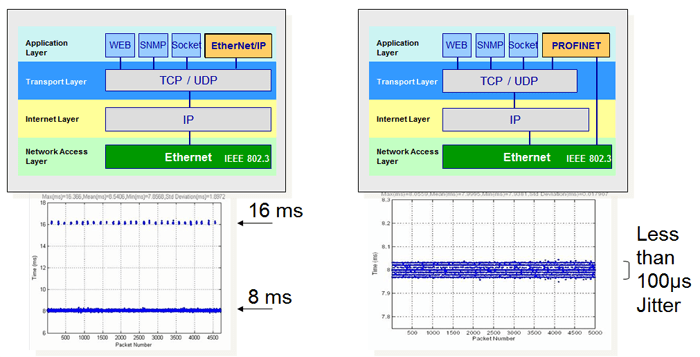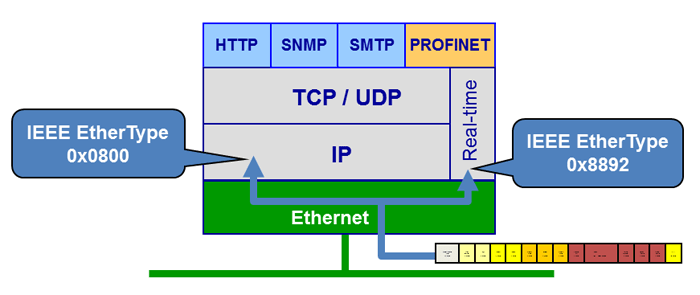In the Dallas PROFINET one-day training class a couple weeks ago, one of the students commented on his Course Evaluation: “How do you say that PROFINET has high marks for TCP/IP, when 99% of the traffic doesn’t use TCP/IP.”
Obviously, I gave high marks to PROFINET for using TCP/IP. I probably should have expanded that to say PROFINET gets high marks for using TCP/IP where appropriate and coexisting with TCP/IP always. The students “99%” was probably a little high, but 100% of PROFINET real-time traffic does not use TCP/IP. Why? Because TCP/IP (and UDP/IP) are not as fast and deterministic as the applications demand. You can see that graphically in the off-quoted Industrial Ethernet Book article “Performance metrics for Industrial Ethernet.” Here’s the relevant comparison:

It’s quite easy for PROFINET RT (Real-Time) messages to coexist with TCP/IP. In fact, one of the great things about the Ethernet model is that multiple applications can be running at the same time. You see that on your office computer when you browse the web while your email arrives. Some of those applications use TCP/IP, but not all. An application that does not use TCP/IP is Address Resolution Protocol (ARP). How does that work? A standard Ethernet field is EtherType. It determines where an arriving Ethernet frame goes. In the case of ARP, its unique EtherType directs the frame to the ARP application, not to TCP/IP. PROFINET RT also has a unique EtherType, so when a PROFINET RT Ethernet frame arrives it goes directly to the PROFINET application:

PROFINET uses TCP/IP where appropriate (for configuration and diagnostics) and skips it (while coexisting with it) when needed for fast, deterministic messaging.
–Carl Henning
More on how PROFINET works(including TCP/IP) in this white paper:
